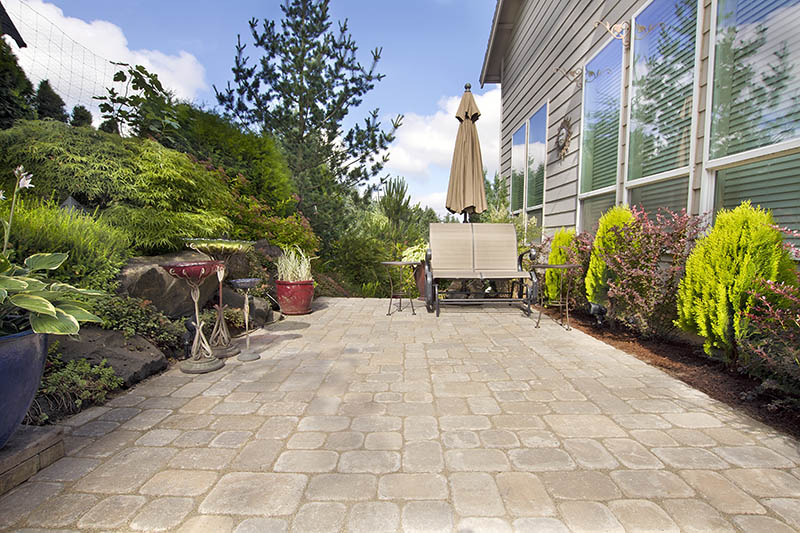Revamping Your Outdoor Spaces
Selecting the ideal pergola transforms outdoor areas by blending functionality with aesthetic appeal. The key to creating an outstanding pergola lies in the material choice, which influences its appearance, resilience, and ability to withstand various environmental conditions. Moreover, consulting with expert pergola builders is crucial for a well-informed decision that considers design preferences, climate adaptability, and financial considerations.
Exploring Pergola Material Options
The selection of materials is a crucial aspect when installing a pergola, as it determines the structure’s visual appeal, durability, and upkeep requirements.
Wooden Charm
Traditionally, wood has been the go-to material for pergola construction, offering a timeless and natural charm. Preferred types include cedar, redwood, and pressure-treated pine. Cedar and redwood stand out for their natural resistance to decay and pests, ensuring longevity. Pressure-treated pine, although less resilient than cedar or redwood, is more affordable and still reasonably durable. However, wooden pergolas need consistent maintenance and may suffer from warping, cracking, or rotting, particularly in harsh weather conditions.
Vinyl: The Contemporary Choice
In recent times, PVC vinyl has gained popularity among pergola and gazebo builders Port Jefferson. Known for its minimal maintenance requirements, vinyl resists decay, pests, and UV damage. Typically available in a limited color palette, with white being predominant, vinyl pergolas are celebrated for their durability and ease of care.
Aluminum: Lightweight and Versatile
Aluminumpergolas are noted for their light weight, resistance to rust, and a wide range of colors and finishes, some even resembling wood. They are particularly suitable for various climates, including coastal regions, although they may become hot under intense sunlight.
Strength of Steel
For unmatched strength and endurance, steel is an excellent choice. Ideal for larger or more ornate structures, steel pergolas can bear heavier loads and, with proper maintenance, endure for decades. However, they require some upkeep to prevent rust.
Fiberglass: Durable and Customizable
Fiberglass stands out for its strength, lightness, and flexibility. It is immune to rotting, warping, and insect damage and can cover larger areas without extensive support. These pergolas can be painted, offering personalization options. While typically more expensive, they require minimal upkeep and are long-lasting.
By understanding these material options and their unique qualities, one can make a more informed decision when selecting the perfect pergola for their outdoor space.
Adapting Pergola Materials to Climate Conditions
When it comes to enhancing outdoor spaces with pergolas, the material selection is not just about aesthetics but also about how well it suits your local weather. Here’s how to choose the best material based on different climatic conditions.
Dealing with Intense Sun and Heat
In regions bathed in strong sunlight and high temperatures, choosing materials that can withstand the sun’s intensity is crucial. Vinyl is an excellent choice for such climates due to its resistance to fading and warping. Aluminum is another viable option, though it can heat up significantly under direct sunlight. For those who prefer wood, cedar is a great choice as it naturally withstands the sun’s damaging effects.
Rain and Humidity: A Moisture-Resistant Approach
In areas prone to frequent rain or high humidity, the threat of rot and mold is significant. Here, vinyl is advantageous as it is impervious to rot and mold. For wooden options, cedar and redwood are ideal as they naturally resist moisture-related decay. Aluminum is also a good choice in humid climates as it doesn’t rust. However, steel may not be the best option unless it’s specially treated to resist rust.
Coastal Climates: Combating Salt Air
The corrosive nature of salty coastal air can be a challenge. Aluminum is a strong contender in such environments, offering resistance to salt and corrosion. Fiberglass is another material that fares well against salty conditions. For wood structures, thorough sealing and regular maintenance are necessary to combat the effects of salt air.
Cold and Snowy Environments
In areas with heavy snow and cold temperatures, the material’s strength and resistance to cracking are paramount. Steel, known for its incredible strength, can support heavy snow loads. Fiberglass is also a good choice in cold climates, as it doesn’t crack or splinter easily. For wooden pergolas, redwood is a suitable option due to its ability to handle temperature fluctuations.
High Wind Areas: Ensuring Stability
In windy locales, the pergola’s stability and anchoring are as important as the material choice. Steel, with its weight and strength, stands up well to high winds. Wood can also be effective if properly anchored and maintained, though regular inspections for wear or damage are essential to maintain its stability.
By carefully considering these weather-related factors, you can select a pergola material that not only enhances your outdoor space or outdoor patio but also stands the test of time and climate.
Optimizing Your Budget in Pergola Construction
Creating a beautiful pergola doesn’t necessarily require a large budget. There are several cost-effective materials available that can help bring your pergola project to life without straining your finances.
Pressure-Treated Pine: An Economical Wood Choice
For those seeking an affordable wooden pergola, pressure-treated pine is a popular option. It’s widely available and budget-friendly. This type of wood undergoes chemical treatment to enhance its resistance to rot, decay, and termites, significantly extending its lifespan compared to untreated wood. Its natural light hue provides a versatile base for painting or staining to match your preferred style.
Metal Options: Steel and Aluminum
Metal pergolas, particularly those made from steel and aluminum, present another economical alternative. Steel is known for its strength and durability but can be pricier. However, with diligent searching, more affordable steel options can be found. Aluminum, in contrast, is generally more cost-effective. It’s lightweight, rust-resistant, and requires little maintenance. Keep in mind that in warmer climates, aluminum can heat up, so consider its placement or adding shade features.
Pergola Kits: A Cost-Effective Solution
Purchasing a pergola kit can be a great way to save money. These kits include all necessary components and instructions, eliminating the need for separate design and material sourcing. Many kits are made with budget-friendly materials, striking a balance between quality and affordability.
Recycling and Reusing Materials
For the budget-conscious, using recycled or reclaimed materials is a viable option. Construction sites or renovation projects often have leftover materials available at reduced prices. With some creativity and resourcefulness, you can find high-quality, eco-friendly materials that are also economical.
Conclusion
Choosing the right material for your pergola is crucial for ensuring it becomes a lasting and beautiful feature in your garden or patio. Whether your priority is natural beauty, weather resistance, or budget, there’s a suitable option available. By considering the guidelines in this article, you can work with custom pergola builders Long Island to design a pergola that aligns with your vision, local climate, and budget, ensuring it remains a valued element of your outdoor space for many years.


Post your comment